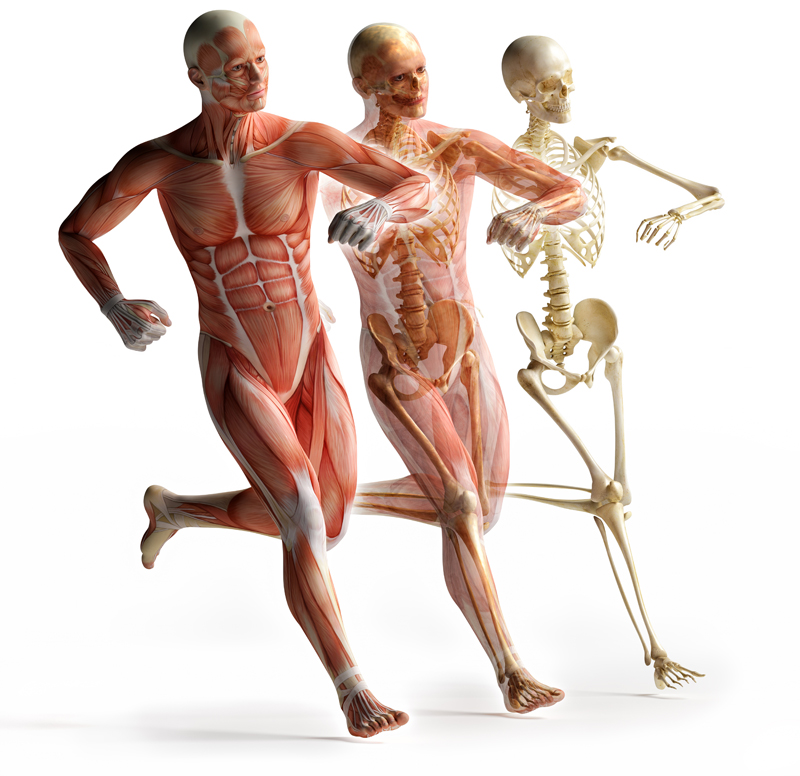
Body composition is a key component of health, a higher percentage of fat tissue being linked with an increased risk of obesity and poor health outcomes.
Fitness enthusiasts and health-conscious people often focus more on body composition than on body weight, as it’s the former that influences the overall health state and makes one more or less prone to certain conditions.
Two individuals with the same body weight can have different body compositions, meaning different percentages of muscle and fat tissues, and it’s not uncommon for people with a normal body weight to have unhealthy levels of adipose tissue. An altered body composition refers to carrying too much body fat in comparison with muscle mass.
In most cases, an unhealthy body composition leads to obesity, as fat tissue burns less energy than muscles. The human body is made up of fat-free and fat mass, the former including not only the lean muscle tissue, but also the bones, water and internal organs. Still, when we refer to body composition, we usually exclude the internal organs, water and bones, as their weight and mass can’t be changed through training and diet.
What one can do for improving their body composition is to focus on building stronger muscles and burning more fat through daily activities, so as to reduce the percentage of body fat and to achieve an overall leaner physique. This is not only for esthetic purposes but also for preventing a series of health concerns, from heart disease and stroke to type 2 diabetes, high cholesterol and blood pressure, fatigue and even certain forms of cancer.
The most common culprit behind an altered body composition is the lack of physical exercise. Statistics show that the average calorie intake in Australia is 2,307 kcal for men, respectively 1,769 kcal for women. These values are by no means unhealthy, on the contrary, an active adult may need more than 2,300 kcal per day for supporting the proper functioning of muscles and internal organs. But if it’s not our diets that lead to an unhealthy body composition, where is the main problem?
The answer is simple: the lack of physical activity is the most common cause of increased body fat and decreased lean mass, adult Australians spending on average 39 hours per week sitting. The percentage of people practicing more than 30 minutes of exercise per day is 43%, the highest levels of exercise being among the young adults aged 18-24. Those aged 75 years and over spend on average 20 minutes per day exercising, which is not enough for preventing obesity or the other health issues mentioned previously.
Surely, reducing the food intake can prevent one from becoming overweight, but it’s not the smartest choice for maintaining a healthy body composition, as one can carry high amounts of visceral fat even if their body weight is normal.

Other factors that alter the body composition are a diet that’s high in sugar, excess alcohol intake and overeating. These can lead to increased LDL cholesterol levels and hardening of arteries, aggravation of arthritis symptoms, varicose veins, poor circulation and blood clots. Risk of gastrointestinal disorders is higher in people with a poor body composition, and flexibility and balance can be affected as well.
On the other hand, a healthy body composition, with a higher percentage of lean mass and a decreased amount of body fat leads to increased energy and endurance, better mood and self-confidence, improved sleep quality, healthy blood pressure, healthier cholesterol levels, less stress placed on bones and joints, improved circulation and lower risk of heart disease. People with stronger muscles and a lower percentage of body fat are less likely to develop diabetes, have healthier insulin sensitivity, and are less prone to infections.
There are several solutions for improving body composition, the first and most accessible one being a more active lifestyle, as previously said. Burning more calories through daily exercise is the simplest way to prevent the accumulation of fat tissue.
For best results, one should adopt a balanced exercise plan that includes both strength and cardio workouts, as each of these has its effects on one’s body composition. Strength training contributes to stronger and leaner muscles and increases the metabolic rate, helping the body to burn more calories even while resting, while cardio exercises burn more energy per session and help the organism use more of its stored fats for energy production.
Another accessible solution is to switch to a healthier diet that is based on real food as opposed to junk food and fast food products. Opt for meals that are low in sugar and rich in protein and good fats, and choose your carbohydrates wisely, eating mostly fruits and vegetables. Don’t forget to add fibre and to drink enough water.
Although you won’t be able to accurately measure your body composition at home, there are a few methods that can give the approximate fat and lean mass percentages, and these include bioelectrical impedance and the use of skinfold calipers.
Have something to add to this article? Feel free to comment below, or join our Facebook community and share your thoughts with us!

Updated on: 08.09.2021 The lymphatic system is involved not only...

Stress can make you gain weight – we’ve heard this...

Various theories exist to answer this question. As you will...

Our series of whole body vibration machine exercise articles continues...

Both rebounding and jumping on a trampoline are excellent ways...